Oxbow’s nursery begins growing plants for the new Burke Museum of Natural History
There is always a buzz of anticipation at Oxbow’s Native Plant Nursery at this time of year as the warmth of an approaching spring coaxes winter’s dormant plants and seeds to life. There is an added fervor in the air this season as Oxbow’s native plant and restoration staff, led by Bridget McNassar, sets the stage for a huge project, the nursery’s biggest to date.
Oxbow recently committed to growing the plants that will serve as an outdoor natural history experience for visitors to the new Burke Museum of Natural History, set to open in Seattle’s University District in 2019. Over the next three years, we will raise some 70,000 plants for the landscape around the new Burke Museum. These plants will not only offer healthy habitat for birds, insects, and other wildlife, but will serve to educate tens of thousands of museum visitors every year who will pass through a new, outdoor exhibit showcasing Washington’s native plants.
All of the plants we are growing will be installed in the museum’s landscape, but as a component of the museum rather than as decoration. The native plant landscape, being designed by the Seattle-based landscape architecture practice, Gustafson Guthrie Nichol, will serve as an educational extension of the indoor exhibit space. The feature that will anchor the Burke in an authentic ecological setting and offer a touchstone of significance to various stakeholder groups. As a once-ubiquitous but now-declining component of landscapes across Washington, native plants have general appeal to gardeners, scientists, ethnobotanists, indigenous peoples, and advocates for sustainability and environmental well-being.
Still three years out from the new museum’s opening, Bridget and her crew are already hard at work. Native plant propagation is an incredibly specialized task, and Bridget must manage the propagation of 50 different species, some of which she has never grown before, and almost all of which have specific, sometimes quite intensive, needs. There will be seed-sowing, transplanting and dividing, seed-collection and care, managing pests and disease, and, of course, endless watering.
Some plants are already growing and requiring care, like the slow-growing lilies that Bridget collected from Dinner Island (in the San Juans) last fall. These plants, large camas, death camas, fawn lily, and chocolate lily, won’t be ready for out-planting for four years. They will be part of a new Burke exhibit showcasing Washington’s rare camas prairie ecosystem.
The New Burke is currently in the design stage and construction is slated to begin in May of 2016. The project will culminate in a new facility that is long overdue at the Burke’s collections, all-in-all about 16 million objects, have been in need of a new home for a long time. The current facility is over 50 years old and was built without any central air conditioning or adequate climate-controlled spaces to house the museum’s most sensitive artifacts and specimens. At 70,000 square feet, the current Burke has exhibit space for a tiny fraction of about one percent of its impressive collection.
The renovated building will be different. The 110,000 square foot facility is being designed by Seattle architect Tom Kundig of Olson Kundig with the intention of opening the Burke’s collection to visitors. A series of glass walls on the exterior and within the building will offer the public unprecedented access to the museum’s inner workings. About 60% of the museum, including some working research labs, will be accessible or visible to the public in the new space, compared to about 30% in the current building.
As conservation enthusiasts ourselves, we feel encouraged that our state’s most renowned natural history museum is investing such resources in exhibiting Washington’s native plant life, and we are proud and excited to be involved in the project in the early stages.
This spring, Bridget is focusing on sowing and dividing plants for the first round of plantings for the Burke landscape’s woodland understory, which will be installed in early 2018. The understory ecosystem will be a patchwork of shrubs and ferns interspersed with a blend of wild strawberry, inside-out flower, and other small, herbaceous plants. Oxbow Fellow Matt Davis will soon arrive from the University of Idaho to begin his summer research on camas production.
We will continue to share information about this exciting project as it unfolds over the next few years.
